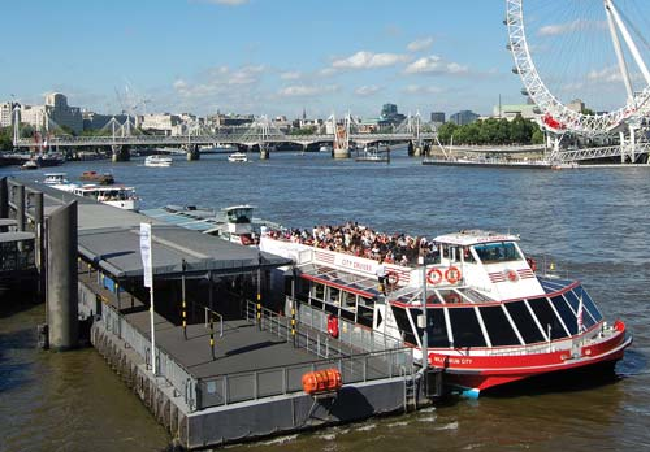Travel Reference
In-Depth Information
watery highway. As recently as a century ago, large ships made their way upstream to the
city center to unload. Today, the major port is 25 miles downstream, and tourist cruise
boats ply the waters.
Look for the
boat piers
on either bank of the Thames. Several tour-boat companies
offer regular departures from Westminster Pier (on the left) or Waterloo Pier (on the right,
near the London Eye). This is an efficient, scenic way to get from here to the Tower of
Lining the river, beneath the lampposts, are little green copper
lions' heads
with rings
for tying up boats. Before the construction of the Thames Barrier in 1982 (the world's
largest movable flood barrier, downstream near Greenwich), high tides from the nearby
North Sea made floods a recurring London problem. The police kept an eye on these lions:
“When the lions drink, the city's at risk.”
Until 1750, only London Bridge crossed the Thames. Then a bridge was built here.
Early in the morning of September 3, 1802, William Wordsworth stood where you're
standing and described what he saw:
This City now doth, like a garment, wear
The beauty of the morning; silent, bare,
Ships, towers, domes, theatres, and temples lie

